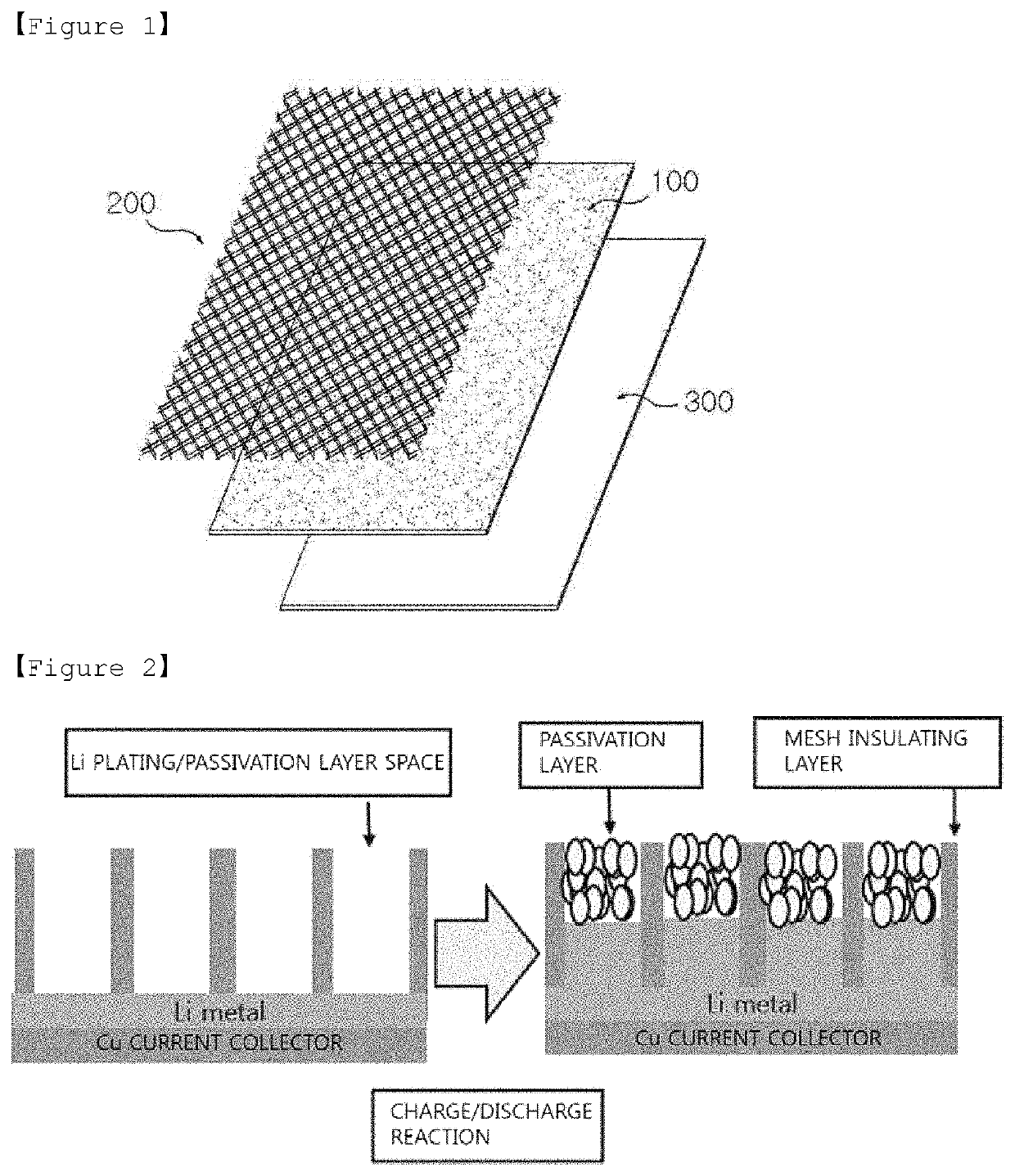Anode for lithium secondary battery comprising mesh-shaped insulating layer, and lithium secondary battery comprising same
a secondary battery and negative electrode technology, applied in secondary cells, secondary cell servicing/maintenance, electrochemical generators, etc., can solve the problems of battery explosion, local current density difference, degeneration of etc., to prevent deintercalation and collapse of passivation layer, enhance battery life time property, and suppress cell volume expansion
- Summary
- Abstract
- Description
- Claims
- Application Information
AI Technical Summary
Benefits of technology
Problems solved by technology
Method used
Image
Examples
example
Example 1—Manufacture of Lithium Secondary Battery
[0061]A lithium secondary battery was manufactured using a lithium metal negative electrode, an organic liquid electrolyte and an NCM positive electrode. In order to prepare the positive electrode, poly(vinylidene fluoride) (PVdF) used as a binder was dissolved in N-methyl pyrrolidone, then Super-P carbon, a conductive material, and LiNi0.8Co0.15Al0.05O2, an active material, were quantized and introduced thereto, and the result was stirred. Herein, the positive electrode active material, the conductive material and the binder had a weight ratio of 85:7.5:7.5. After coating the completely mixed slurry solution on an aluminum current collector, and drying the result, a lamination process was carried out using a roll press. This is for enhancing mutual binding strength of the active material / conductive material / binder, and effectively binding these materials on the current collector. After the pressing process, a proper-sized electrode ...
example 2
[0064]A lithium secondary battery was manufactured in the same manner as in Example 1 except that an insulating layer having 20 μm mesh pores is used.
example 3
[0065]A lithium secondary battery was manufactured in the same manner as in Example 1 except that an insulating layer having 40 μm mesh pores is used.
PUM
| Property | Measurement | Unit |
|---|---|---|
| pore size | aaaaa | aaaaa |
| pore size | aaaaa | aaaaa |
| pore size | aaaaa | aaaaa |
Abstract
Description
Claims
Application Information
 Login to View More
Login to View More - R&D
- Intellectual Property
- Life Sciences
- Materials
- Tech Scout
- Unparalleled Data Quality
- Higher Quality Content
- 60% Fewer Hallucinations
Browse by: Latest US Patents, China's latest patents, Technical Efficacy Thesaurus, Application Domain, Technology Topic, Popular Technical Reports.
© 2025 PatSnap. All rights reserved.Legal|Privacy policy|Modern Slavery Act Transparency Statement|Sitemap|About US| Contact US: help@patsnap.com

